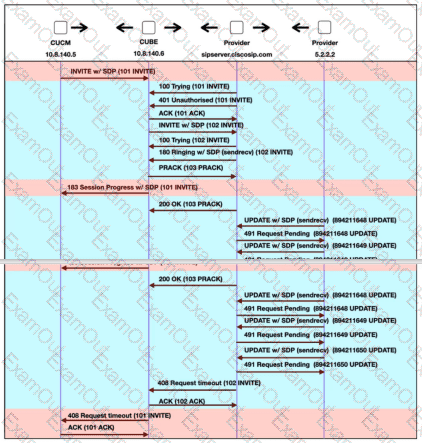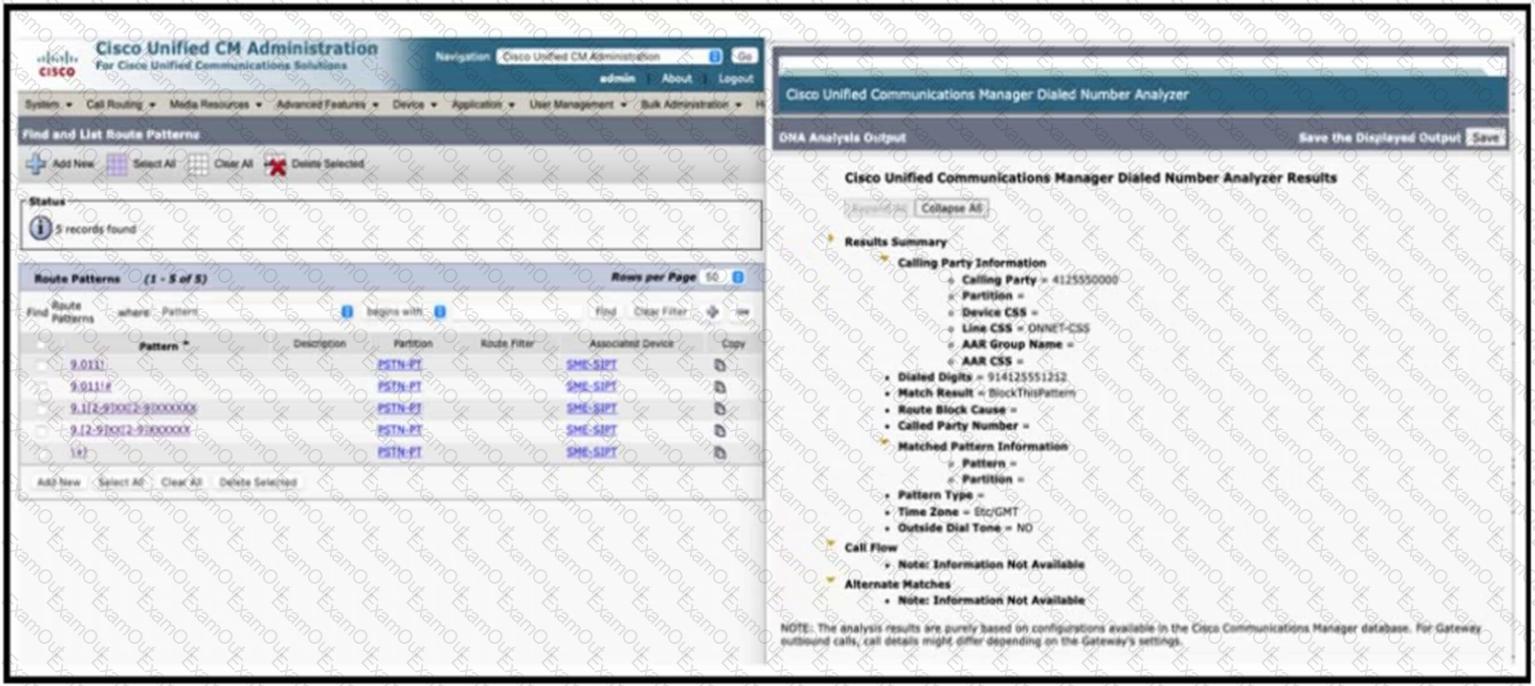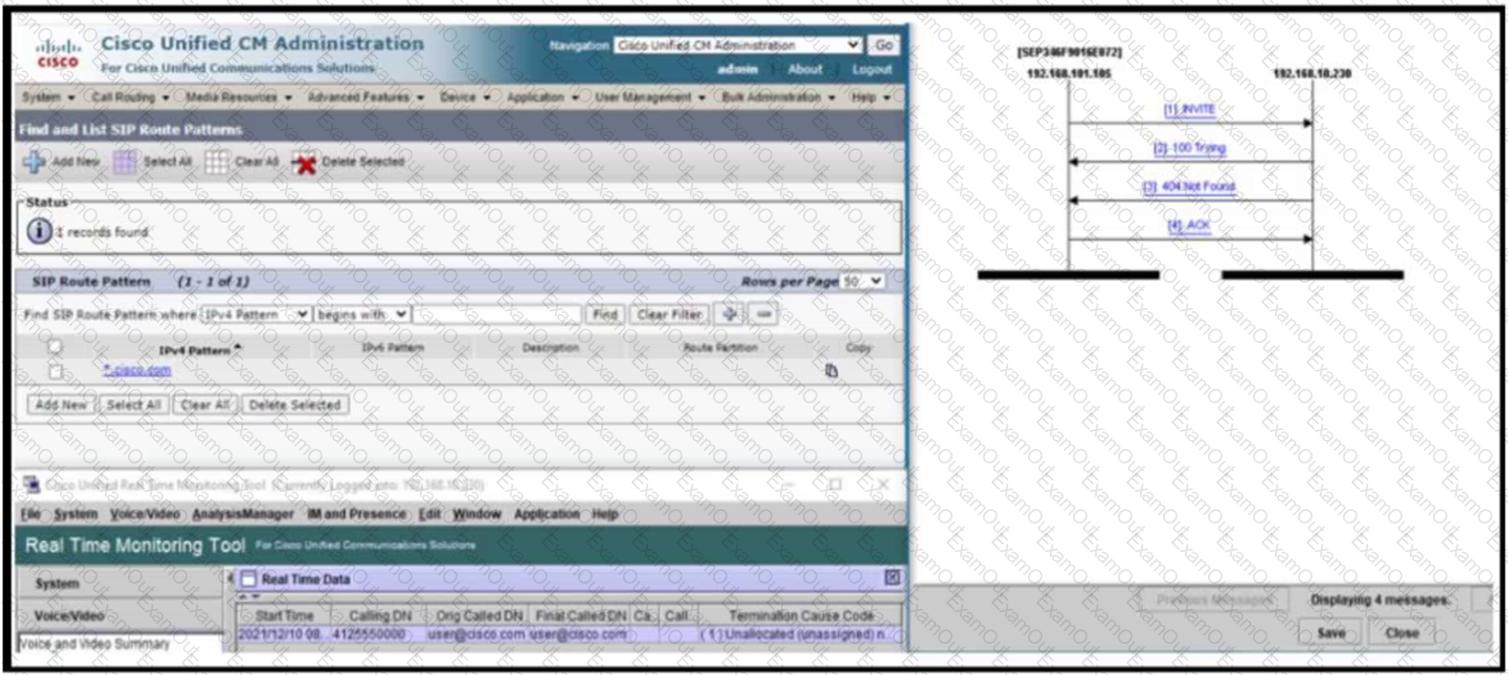Which top-level IOS command is needed to begin the configuration of a Cisco Unified Communications Manager Express gateway to enable phones to be registered via SIP?
What is a component of Cisco Unified Mobility?
Refer to the exhibit.

A Cisco Unified Border Element continues to send 180/183 with the required: 100rel header to Cisco UCM. and the call eventually disconnects How is the issue resolved?
Which two types of authentication are supported for the configuration of Intercluster Lookup Service? (Choose two.)

Refer to the exhibit. A collaboration engineer is troubleshooting an issue where a user of a Cisco UCM IP phone reports failed calls when trying to dial out to the PSTN. Which action resolves the issue?
An administrator is trying to apply configuration changes on Cisco CME. When the users registered on Cisco CME to dial a local number to a PSTN call, the Cisco CME sends an incorrect number of digits. What translation rule fixes the issue and sends the correct number of digits?

Refer to the exhibit. A collaboration engineer is troubleshooting a Cisco UCM issue where users report that calls placed to the domain cisco.com are failing and calls to sip.cisco.com are working. Which action resolves the issue?
Refer to the exhibit.

Users report that when they dial to Cisco Unity Connection from an external network, they cannot enter any digits. Assuming only in-band DTMF is supported, what is a reason for this malfunction?
When configuring hunt groups, where do you add the individual directory numbers that will be part of the group?
The administrator of ABC company is troubleshooting a one-way audio issue for a call that uses H.323 protocol (slow-start mode). The administrator requests that you provide the IP and port information of the Real- Time Transport Protocol traffic that had the one-way audio call.
You gather the H.225 and H.245 messages for one of the one-way audio calls. Where can you find the RTP IP and port information for both sides? (Note: This call flow has not invoked any media resources like MTP or transcoders).

